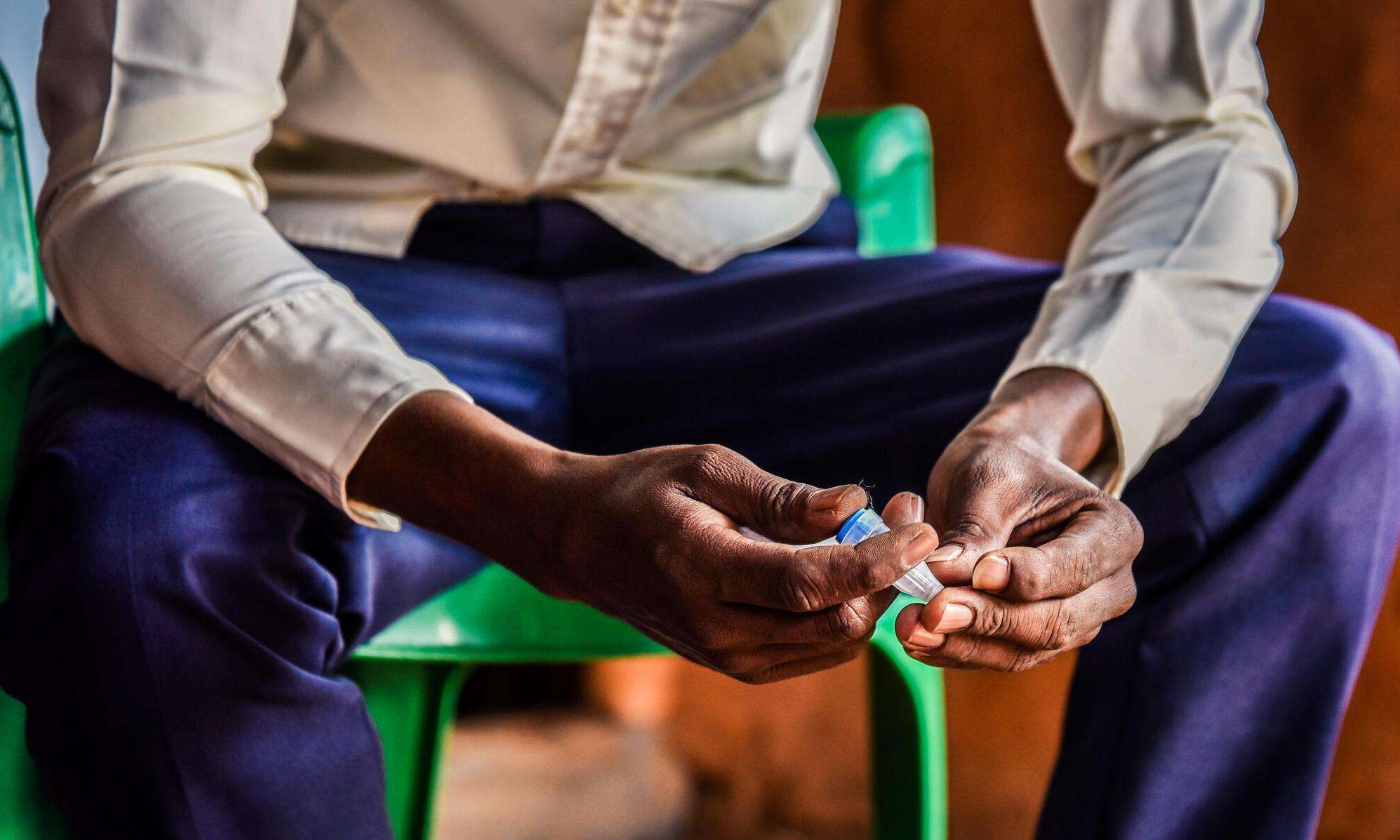NEW YORK/ATHENS/GENEVA, May 8, 2024—A report published today by Doctors Without Borders/Médecins Sans Frontières (MSF) and T1International shows astonishing markups by pharmaceutical corporations on insulin injection pens and newer diabetes medicines.
The report, released ahead of the Symposium on Diabetes in Humanitarian Crises in Athens, illustrates the urgent need for governments and policymakers—including in the US—to take action to reduce prices and address the lack of competition in the market for these essential treatments as Eli Lilly, Novo Nordisk, and Sanofi dominate the diabetes market. Doing so would expand access in low- and middle-income countries. Currently, only half of all the people in the world who need insulin have access to it.
While insulin pens are the standard of care in high-income countries, the high prices companies charge mean they are almost never available to people in low- and middle-income countries even though they are more practical and safer for people to use than vials and syringes, especially in fragile and humanitarian settings. The World Health Organization (WHO) has recognized the critical value of insulin pen devices and long-acting insulin recently, including them in its list of Essential Medicines, which countries use to prioritize their own essential medicines lists and procurement plans. MSF is among the few humanitarian groups currently procuring insulin pens.
Facts about diabetes
- Only one in seven people living with type 1 diabetes in Africa who need insulin have access to it.
- Diabetes is more likely to occur at an early age in low-resource settings.
- In 2019, diabetes entered the top 10 causes of death worldwide for the first time, with deaths increasing by 70% since 2000, according to WHO.
- Research has shown that in the 10 low- and middle-income countries with the highest diabetes prevalence, improving diabetes diagnosis and access to essential medicines could prevent 800,000 premature deaths each year.
Learn more about diabetes
Insulin pens improve quality of life for people with diabetes
“In Lebanon, offering pens to people with diabetes in our care has had a significant and positive impact on their quality of life, especially for children who are more likely to stick to their treatment schedule with the easier-to-use and less painful pens,” said Dr. Sawsan Yaacoub, a pediatrician for MSF in Lebanon. “Living with diabetes is challenging no matter where in the world you are. Now that we have a treatment option in insulin pens that is preferred and more practical, it should be an urgent priority to address pricing barriers and expand their availability to as many people as possible, especially considering how affordable pens could be if pharmaceutical corporations priced them fairly and without unnecessary markups.”

MSF and T1International’s survey of over 400 people on insulin in 38 countries found that 82 percent of those who had used both pens and the more traditional syringe and needle to deliver insulin preferred using pens. Insulin pens are easier and safer to use, administer the correct dose, and are less painful and less stigmatizing to use in public—all factors that improve the quality of life of people with diabetes and support adherence to treatment.
“We firmly believe that every person with diabetes should have affordable access to the insulin and delivery device that is best for their body,” said Elizabeth Pfiester, T1International’s founder and executive director. “With many people with diabetes in our community having experienced a markedly improved quality of life with insulin pens, their availability as a treatment option is vital.”
Glaring price disparities reveal unnecessary markups
Based on MSF’s research of the cost of production, long-acting insulin pens, which are the standard of care in high-income countries, could be sold at profit for as low as $111 per patient per year, which includes insulin and the device needed to inject it. This is 30 percent less than human insulin in a vial with syringes, which have always been thought to be the most affordable option—and therefore the only option offered to people in low- and middle-income countries or in humanitarian settings. Long-acting insulin pens, for example, are sold for $2.98 in South Africa, $7.88 in India, and $28.40 in the US, compared to the cost-based price of $1.30 per pen. This disparity in prices reveals the extreme and unnecessary markup charged by corporations.
Eli Lilly, and Novo Nordisk are the only producers of a newer class of medicine used to treat people with diabetes: GLP-1 receptor agonists like those marketed as Ozempic and Trulicity. These corporations charge astronomical prices because their intellectual property barriers block generic manufacturers from entering the market, which could help drive prices down. A commonly used GLP-1, semaglutide, could be sold at a profit for just $0.89 per month, yet costs $115 per month in South Africa, $230 in Latvia, and $353 in the US, which is almost 40,000 percent higher than what the estimated generic price could be. In addition to driving prices down, having additional manufacturers in the market would help meet the global demand for these new medicines, which Eli Lilly and Novo Nordisk continue to struggle to meet on their own.
The US must do more to ensure equitable access to diabetes drugs worldwide
“While the announcement of a recent US Senate investigation into Novo Nordisk’s GLP-1 drug prices is an important step, the US government must do more to ensure equitable access to diabetes drugs worldwide,” said Mihir Mankad, senior global health advocacy and policy advisor for MSF USA. “In many of the places we work, lack of equitable access to insulin injection pens and newer diabetes medicines make care much more difficult for people who are already struggling to deal with this life-threatening condition."
"The US must demand that Eli Lilly, Novo Nordisk, and Sanofi lower the prices they're charging and do more to facilitate generic production, like allowing licensing and tech transfer," Mankad continued. "The US must also promote price transparency for these medical tools and provide technical and financial assistance to national diabetes programs in low- and middle-income countries.”
Diabetes is not just a disease of high-income countries; it affects 537 million people globally. Cases are rising in low- and middle-income countries, with a projected increase of 134 percent in Africa by 2045. MSF has significantly increased the number of diabetes consultations in our global medical programs, conducting 205,122 diabetes-related consultations in 2022 alone.




